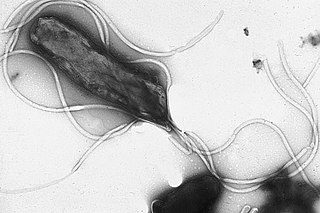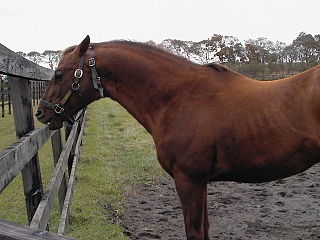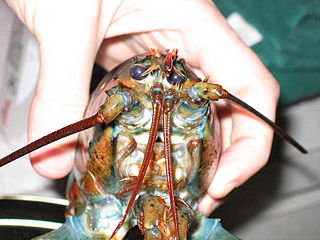This article needs additional citations for verification .(April 2014) |
Ulcers in Executive Monkeys was a study into the effects of stress, published in 1958 in Scientific American by Joseph V. Brady. [1]
This article needs additional citations for verification .(April 2014) |
Ulcers in Executive Monkeys was a study into the effects of stress, published in 1958 in Scientific American by Joseph V. Brady. [1]
In an early version of the study, Brady placed monkeys in 'restraining chairs' and conditioned them to press a lever. [2] They were given electric shocks every 20 seconds unless they pressed the lever during the same time period. This study came to an abrupt halt when many of the monkeys died from perforated ulcers.
To test this Brady used a yoked control monkey. He placed an 'Executive Monkey' in the restraining chair, which could press the lever to prevent the electric shock. The yoked monkey had no control over the lever, leaving only the 'Executive' with the psychological stress of pushing the lever.
After 23 days of a continuous 6 hours on, 6 hours off schedule of electric shocks, the executive monkey died. Brady then tried various schedules, but no monkeys died from this. He then returned to the original 6 on, 6 off, and tested the stomachs of the Executives and found that their stomach acidity was greatest during the rest period.
The greatest danger occurred when the sympathetic arousal stopped and the stomach was flooded with digestive hormones. This was a parasympathetic rebound associated with the Hypothalamic-pituitary-adrenal axis, which led to the development of ulcers in the Executive monkeys.
In all the variations of the experiment, no yoked control monkey ever developed an ulcer. This suggests that the ulcers were a symptom of the excessive stress induced by having control. Hans Selye's General Adaptation Syndrome proposes a similar effect in the Exhaustion phase.
Peptic ulcer disease is a break in the inner lining of the stomach, the first part of the small intestine, or sometimes the lower esophagus. An ulcer in the stomach is called a gastric ulcer, while one in the first part of the intestines is a duodenal ulcer. The most common symptoms of a duodenal ulcer are waking at night with upper abdominal pain, and upper abdominal pain that improves with eating. With a gastric ulcer, the pain may worsen with eating. The pain is often described as a burning or dull ache. Other symptoms include belching, vomiting, weight loss, or poor appetite. About a third of older people with peptic ulcers have no symptoms. Complications may include bleeding, perforation, and blockage of the stomach. Bleeding occurs in as many as 15% of cases.

Helicobacter pylori, previously known as Campylobacter pylori, is a gram-negative, flagellated, helical bacterium. Mutants can have a rod or curved rod shape, and these are less effective. Its helical body is thought to have evolved in order to penetrate the mucous lining of the stomach, helped by its flagella, and thereby establish infection. The bacterium was first identified as the causal agent of gastric ulcers in 1983 by the Australian doctors Barry Marshall and Robin Warren.
Learned helplessness is the behavior exhibited by a subject after enduring repeated aversive stimuli beyond their control. It was initially thought to be caused by the subject's acceptance of their powerlessness, by way of their discontinuing attempts to escape or avoid the aversive stimulus, even when such alternatives are unambiguously presented. Upon exhibiting such behavior, the subject was said to have acquired learned helplessness.

Alexander Fernando Pacheco is an American animal rights activist. He is the founder of 600 Million Dogs, co-founder and former chairman of People for the Ethical Treatment of Animals (PETA) and a member of the advisory board of the Sea Shepherd Conservation Society.

Harry Frederick Harlow was an American psychologist best known for his maternal-separation, dependency needs, and social isolation experiments on rhesus monkeys, which manifested the importance of caregiving and companionship to social and cognitive development. He conducted most of his research at the University of Wisconsin–Madison, where humanistic psychologist Abraham Maslow worked with him for a short period of time.
In internal medicine, relapse or recidivism is a recurrence of a past condition. For example, multiple sclerosis and malaria often exhibit peaks of activity and sometimes very long periods of dormancy, followed by relapse or recrudescence.
Type A and Type B personality hypothesis describes two contrasting personality types. In this hypothesis, personalities that are more competitive, highly organized, ambitious, impatient, highly aware of time management, or aggressive are labeled Type A, while more relaxed, "receptive", less "neurotic" and "frantic" personalities are labeled Type B.

Sucralfate, sold under various brand names, is a medication used to treat stomach ulcers, gastroesophageal reflux disease (GERD), radiation proctitis, and stomach inflammation and to prevent stress ulcers. Its usefulness in people infected by H. pylori is limited. It is used by mouth and rectally.

Cribbing is a form of stereotypy (equine oral stereotypic behaviour), otherwise known as wind sucking or crib-biting. Cribbing is considered to be an abnormal, compulsive behavior seen in some horses, and is often labelled a stable vice. The major factors that cause cribbing include stress, stable management, genetic and gastrointestinal irritability.

Emotion is defined as any mental experience with high intensity and high hedonic content. The existence and nature of emotions in non-human animals are believed to be correlated with those of humans and to have evolved from the same mechanisms. Charles Darwin was one of the first scientists to write about the subject, and his observational approach has since developed into a more robust, hypothesis-driven, scientific approach. Cognitive bias tests and learned helplessness models have shown feelings of optimism and pessimism in a wide range of species, including rats, dogs, cats, rhesus macaques, sheep, chicks, starlings, pigs, and honeybees. Jaak Panksepp played a large role in the study of animal emotion, basing his research on the neurological aspect. Mentioning seven core emotional feelings reflected through a variety of neuro-dynamic limbic emotional action systems, including seeking, fear, rage, lust, care, panic and play. Through brain stimulation and pharmacological challenges, such emotional responses can be effectively monitored.

This is a timeline of the events relating to the discovery that peptic ulcer disease and some cancers are caused by H. pylori. In 2005, Barry Marshall and Robin Warren were awarded the Nobel Prize in Physiology or Medicine for their discovery that peptic ulcer disease (PUD) was primarily caused by Helicobacter pylori, a bacterium with affinity for acidic environments, such as the stomach. As a result, PUD that is associated with H. pylori is currently treated with antibiotics used to eradicate the infection. For decades prior to their discovery, it was widely believed that PUD was caused by excess acid in the stomach. During this time, acid control was the primary method of treatment for PUD, to only partial success. Among other effects, it is now known that acid suppression alters the stomach milieu to make it less amenable to H. pylori infection.

A shock collar or remote training collar, also known as an e-collar, Ecollar, or electronic collar) is a type of training collar that utilizes electrical shocks to induce pain to the neck of a dog or other parts of its body, depending on the desired outcome. These collars incorporate a radio-controlled electronic device and are worn around the dog's neck. Many European countries view shock collars as animal cruelty and have banned their use. The mechanism behind shock collars involve inflicting varying levels and duration of pain, which generates fear and serves as a deterrent for undesirable behaviors. Some models of shock collar models offer additional features such as a tone or vibrational setting that can be used as an alternative or in combination with the shock. Certain advanced collars include Internet mapping capabilities and GPS functionality to track the dog's location or notify the owner about its whereabouts.
A stress ulcer is a single or multiple mucosal defect usually caused by physiological stress which can become complicated by upper gastrointestinal bleeding. These ulcers can be caused by shock, sepsis, trauma or other conditions and are found in patients with chronic illnesses. These ulcers are a significant issue in patients in critical and intensive care.

Joseph Vincent Brady was an American psychologist, neuroscientist, and pioneer of behavioral pharmacology. In addition to his status as a founder of behavioral pharmacology, he made significant contributions in the areas of drug abuse and treatment, space exploration, and human research ethics.
The discovery of disease-causing pathogens is an important activity in the field of medical science. Many viruses, bacteria, protozoa, fungi, helminthes and prions are identified as a confirmed or potential pathogen. In the United States, a Centers for Disease Control program, begun in 1995, identified over a hundred patients with life-threatening illnesses that were considered to be of an infectious cause, but that could not be linked to a known pathogen. The association of pathogens with disease can be a complex and controversial process, in some cases requiring decades or even centuries to achieve.
Animal psychopathology is the study of mental or behavioral disorders in non-human animals.
Charon Robin Ganellin FRS is a British medicinal chemist, and Emeritus Smith Kline and French Professor of Medicinal Chemistry, at University College London.
Self-administration is, in its medical sense, the process of a subject administering a pharmacological substance to themself. A clinical example of this is the subcutaneous "self-injection" of insulin by a diabetic patient.

Pain in crustaceans is a scientific debate which questions whether they experience pain or not. Pain is a complex mental state, with a distinct perceptual quality but also associated with suffering, which is an emotional state. Because of this complexity, the presence of pain in an animal, or another human for that matter, cannot be determined unambiguously using observational methods, but the conclusion that animals experience pain is often inferred on the basis of likely presence of phenomenal consciousness which is deduced from comparative brain physiology as well as physical and behavioural reactions.
J. Bruce Overmier is an American experimental psychologist, author, and academic. He is Professor Emeritus in the Department of Psychology at the University of Minnesota (UMN).